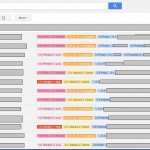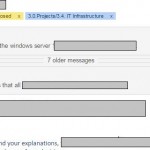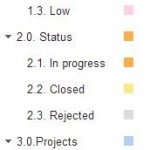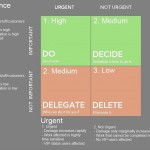 One of the most demanding task in my work place is handling the various issues that are related to the IT systems we maintain. So I was asked to come up with a method of tracking these issues with the limited resources that we have. That means that we had to implement a method that would need no additional starting cost, no recurring fees, little administration and maintenance time, be implemented and used by the whole team, be future proof, efficient, and oh I forgot, had to be implemented immediately … as always.
One of the most demanding task in my work place is handling the various issues that are related to the IT systems we maintain. So I was asked to come up with a method of tracking these issues with the limited resources that we have. That means that we had to implement a method that would need no additional starting cost, no recurring fees, little administration and maintenance time, be implemented and used by the whole team, be future proof, efficient, and oh I forgot, had to be implemented immediately … as always.
Also I had to take into consideration that our users, business partners, vendors and even team members were used to using either telephone or email as their main method of communicating these issues, and the fact that everyone believes that their issue is of the highest priority … again as always :-).
Weapon of choice
Grouping and Categorization
 Emails that share the same title get grouped into the same conversation in gmail, making grouping emails regarding the same issue a piece of cake (Re: or Fw: preceding the title also apply so replies and forwards are grouped in the same conversation). This means that all you have to do to keep track of all the communication concerning an issue into one conversation, is reply the same email and cc to the specific gmail address.
Emails that share the same title get grouped into the same conversation in gmail, making grouping emails regarding the same issue a piece of cake (Re: or Fw: preceding the title also apply so replies and forwards are grouped in the same conversation). This means that all you have to do to keep track of all the communication concerning an issue into one conversation, is reply the same email and cc to the specific gmail address.
Labels on the other hand can be considered as folders or categories, but in Gmail you can apply multiple labels on one email, making more complex categorization.
 You could pretty much add any category or dimension you like but in our case we decided it is best we keep it as simple as possible. Also keep in mind that the more labels you add the less space is left for the title of the conversation to be shown on gmail’s email list. We also like to use colors in our labels to emphasis the status and priority.
You could pretty much add any category or dimension you like but in our case we decided it is best we keep it as simple as possible. Also keep in mind that the more labels you add the less space is left for the title of the conversation to be shown on gmail’s email list. We also like to use colors in our labels to emphasis the status and priority.
As mentioned before one can assign multiple labels to each group of emails that regard the same issue (a.k.a conversation). So for example a conversation can have the following labels:
Search and retrieval
We also remove the emails from the inbox once they get categorized for better administration. In this way the administrator can access the inbox and see all new emails. All he/she has to do is assign the right labels (if not already assigned) and remove it from the inbox (which by the way is handled by google as just another label).
Another default functionality of basically every email client/service is the date received which can also be used when finding and retrieving issues.
Prioritization
So we use the Eisenhower Matrix method, just like explained in the Eisenhower Matrix with Evernote post
Methodology
It is important that all parties understand that they should always include the specific email address in their CC(or TO doesn’t actually make any difference to gmail). In this way you can have a nice history of the issue from user, IT stuff, vendor etc.
It is also a good idea to have some kind of naming policy, i.e. “Proj A – Issue”, but to be honest its hard enough to get everyone to simply include the specific email in their CC.
Now every once in a while during the day an administrator should check the inbox and categorize the emails. If something is deemed as High Priority the administrator must alert the appropriate stuff or vendor so that the issue is handled as soon as possible.
The administrator should at least once a day review the Medium Priority issues that were not assigned to anyone, alert the appropriate stuff or vendor and make a schedule on when the issue should be handled. Any unassigned or unhanded issues could be to addressed in a weekly IT stuff meeting.
The Low Priority issues, even though the matrix says delete them, a better alternative would be to review those issues in a monthly basis.
The issues should be assigned to the IT personnel at least Twice a day and a weekly meeting should be held to review the progress of the issues.

Pingback: Trello Kanban like Board for Issues and Tasks Tracking ← gieglas.com